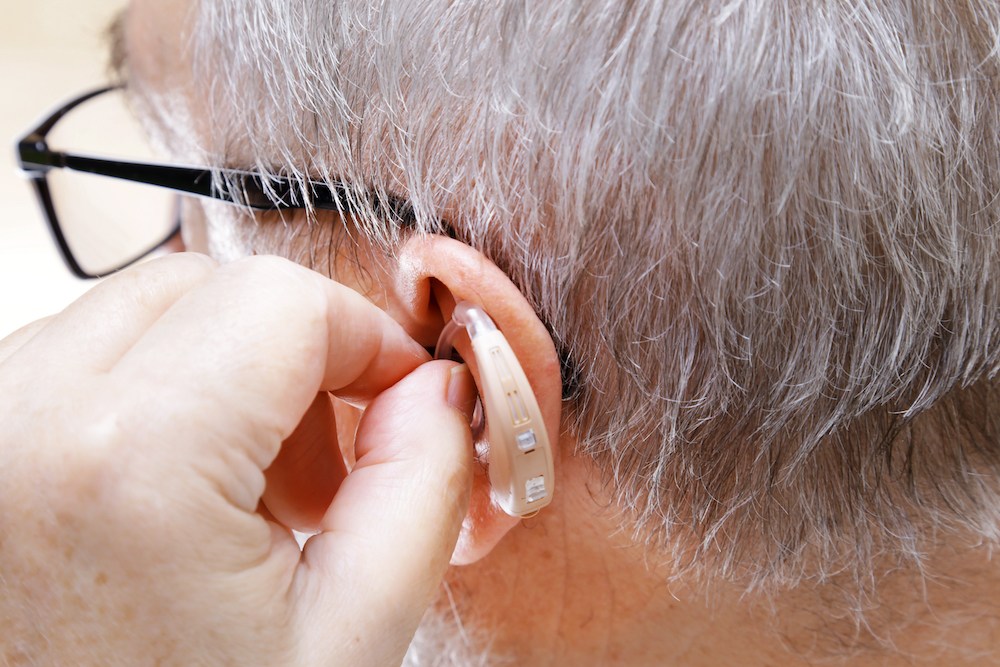How AI is Being Used to Customize Hearing Solutions
Feeling lost in the world of hearing loss solutions? The good news is, new

By: admin | April 20, 2023
Hearing loss can have a profound impact on an individual’s quality of life, affecting their ability to communicate with others and fully participate in daily activities. Fortunately, advances in hearing loss treatment and technology have made it easier for those with hearing loss to lead fulfilling lives. Whether you’re looking to treat hearing loss for the first time or you simply want to upgrade your hearing aids to something more advanced, there are a plethora of options available to suit your unique needs.
One of the most significant breakthroughs in hearing loss treatment has been the development of hearing aids. Today’s hearing aids are smaller, more comfortable and more effective than ever before. They come in a variety of styles, ranging from behind-the-ear to in-the-ear and offer a range of features to suit individual needs.
One of the most important features of modern hearing aids is noise reduction. Many hearing aids are equipped with advanced algorithms that can identify and reduce background noise, making it easier for wearers to hear speech and other important sounds. Directional microphones are another common feature, which can help to amplify sounds coming from a specific direction, such as a conversation partner or the television.
Wireless connectivity is another significant advancement in hearing aid technology. Many modern hearing aids can connect directly to smartphones, televisions and other audio devices, allowing wearers to stream audio directly to their hearing aids. This can be particularly beneficial for watching television or listening to music, as wearers can adjust the volume to their preferred level without disturbing others in the room.
Rechargeable batteries are also becoming more common in hearing aids. Instead of constantly buying and replacing disposable batteries, wearers can simply recharge their hearing aids overnight, providing a more convenient and eco-friendly option.
In-the-ear hearing aids are another popular style, offering a discreet and comfortable option for wearers. They sit inside the outer ear bowl and are custom molded to fit the wearer’s ear, providing a snug and secure fit. Many in-the-ear hearing aids are equipped with feedback cancellation technology, which can prevent the annoying whistling sound that can occur when sound leaks out of the hearing aid and back into the microphone.
Another type of hearing aid is the receiver-in-canal (RIC) hearing aid. This style is similar to behind-the-ear hearing aids but features a small speaker that sits inside the ear canal. RIC hearing aids are discreet and comfortable, and they offer a natural sound quality that is hard to beat.
One of the most exciting advancements in hearing aid technology is artificial intelligence (AI). AI-enabled hearing aids can automatically adjust to different listening environments, such as a noisy restaurant or a quiet room, making it easier for wearers to hear speech and other important sounds. They can also learn the wearer’s preferences over time, adapting to their individual needs and providing a more personalized experience.
Another exciting development in hearing aid technology is the use of biometric sensors. These sensors can track important health metrics, such as heart rate and activity level and provide wearers with valuable information about their overall health and well-being. This technology is still in its early stages, but it has the potential to revolutionize the way we think about hearing aids and their role in promoting overall health.
Hearing aids can significantly improve an individual’s quality of life and provide many benefits. They can help people with hearing loss to better engage in conversations, participate in social activities and stay connected to the world around them. Additionally, hearing aids can improve cognitive function by reducing the strain on the brain when trying to hear and process speech. Some other benefits of hearing aids include:
Overall, hearing aids can greatly improve an individual’s quality of life by allowing them to fully participate in conversations and activities they might have otherwise missed.
Advances in hearing loss treatment and technology have made it easier for those with hearing loss to lead fulfilling lives. From noise reduction and directional microphones to wireless connectivity and AI, hearing aids offer a range of features to suit individual needs.
As technology continues to evolve, we can expect even more exciting developments in the field of hearing loss treatment and technology. To learn more about your options for treating hearing loss, give the team at Dr. Eimer’s Hearing Clinic a call at: 231-333-5118.
Tags: hearing aid technology

Feeling lost in the world of hearing loss solutions? The good news is, new
By: admin | April 30, 2024

Managing hearing loss involves consistent care, regular check-ups and
By: admin | February 28, 2024

There are many clear benefits to wearing a hearing aid. Unfortunately, a
By: admin | December 28, 2023
